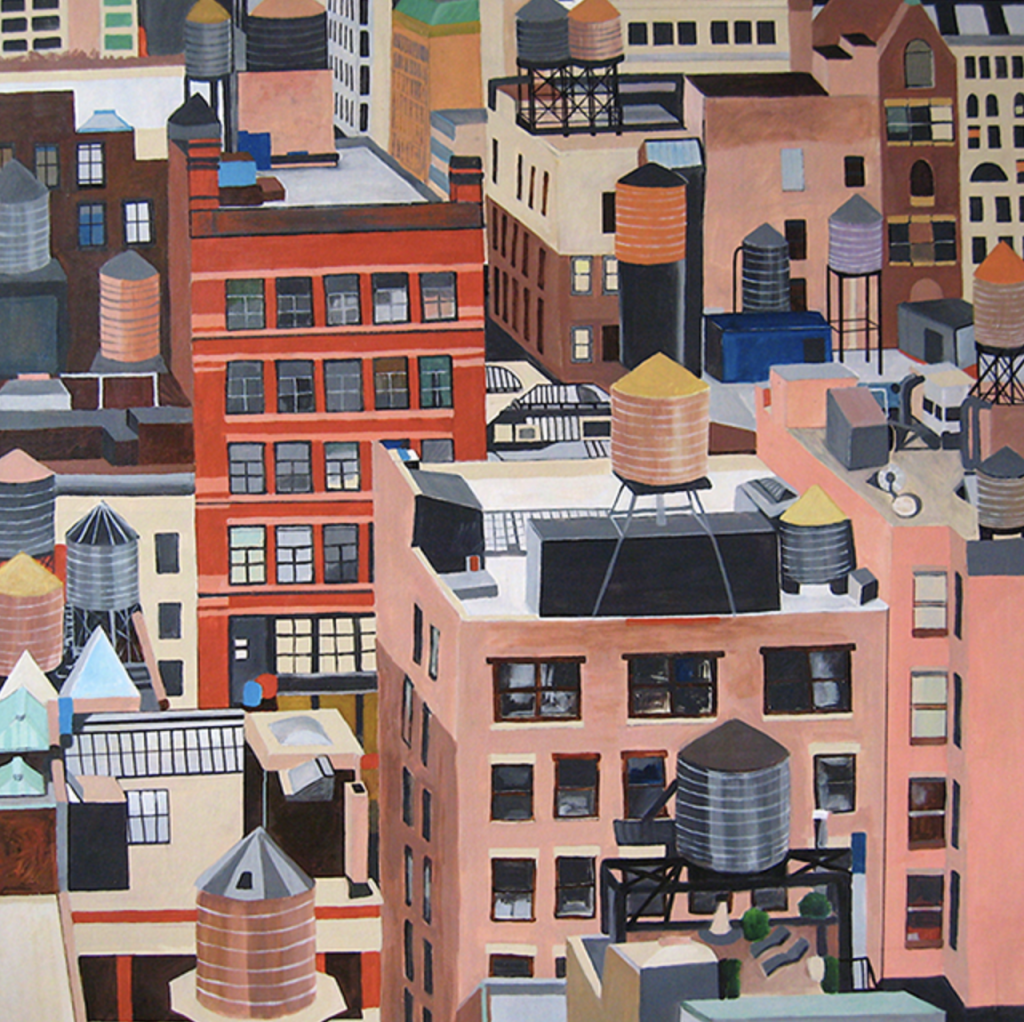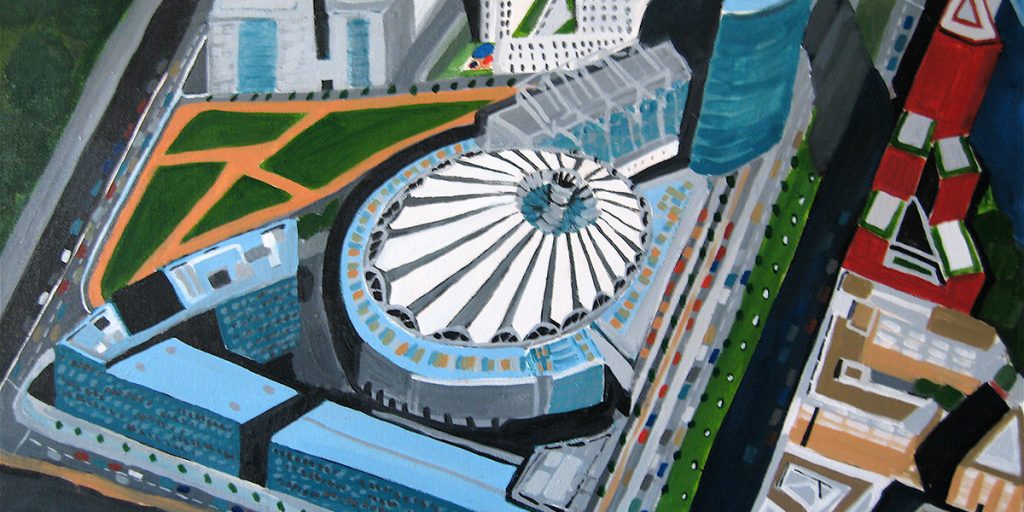Born in Philadelphia, Toni Silber-Delerive built her path in the arts with steady dedication. She grew up in Philadelphia and first immersed herself in the arts through a BFA in painting at the Philadelphia College of Art. From there, she pursued an MA in art education at Kean College in New Jersey, deepening both her technical grounding and teaching perspective. Her path later took her to New York City, where she expanded into graphic design and silkscreen printing at the School of Visual Arts. Those studies broadened her skills while also sharpening her eye for form, color, and composition—elements that continue to shape the direction of her work today. This wide foundation gave her the ability to move across mediums, balancing the painter’s eye with the precision of design. Over the years, she has developed a body of work that captures the shapes, patterns, and rhythms of urban life, exploring how perspective shifts the way we see. Her paintings invite viewers to see familiar places from unfamiliar angles, turning the city into a living composition of geometry and color.

The Work of Toni Silber-Delerive
Toni Silber-Delerive’s paintings are rooted in a fascination with structure, order, and how the built environment shapes our daily lives. One of her signature approaches is the aerial perspective. By placing the viewer above the scene, she creates a way of looking that flattens and abstracts familiar cityscapes. Streets, rooftops, and water towers become part of a grid of colors and forms, revealing beauty in what might otherwise be overlooked.
The painting shown here is a strong example of her vision. It depicts a dense cluster of New York rooftops, where old water towers rise like sentinels above the city blocks. Each tank, some cylindrical, some conical, sits perched on steel frameworks or directly on the roofs. Instead of blending into the background, Silber-Delerive makes them central figures. Their rounded shapes contrast against the square façades and angular rooftops, creating a rhythm across the composition.
What stands out is her use of color. Rather than sticking to photographic realism, she leans into a palette that highlights the warmth of brick, the softness of faded stucco, and the quiet grays of industrial metal. The reds and pinks of the buildings play off the muted tones of the tanks. Windows and doors are painted with sharp lines but not overworked. This balance gives the piece both clarity and openness, allowing viewers to settle into the scene without feeling trapped by detail.
Perspective is also central to her style. Silber-Delerive often tilts the viewer’s vantage point, removing the horizon line and presenting a compressed, almost map-like view. Here, the city unfolds in layers stacked upward, guiding the eye from one roof to the next. This perspective flattens distance, making everything seem immediate and present. It is not the New York of skyscraper skylines but of neighborhood rooftops, lived-in spaces where the everyday becomes monumental.
Her choice of subject—the humble water tower—is telling. These structures are often ignored, part of the city’s hidden infrastructure. By painting them, she elevates them into symbols of endurance and identity. They become part of the story of New York, speaking to both its history and its persistence. In her hands, the city becomes both personal and universal.
Beyond subject matter, Silber-Delerive’s work also reflects her background in graphic design. Each painting shows an awareness of composition, balance, and pattern. The blocks of color are carefully arranged, guiding the eye without feeling rigid. Negative space is considered just as much as the painted areas. This sensibility gives her work a clarity that feels modern while still rooted in painterly tradition.
At the same time, her art is not cold or clinical. The brushwork and color choices keep the work warm and human. Viewers can sense her hand in the way edges are treated, the way surfaces are painted. This gives the city an intimacy, as though it is being remembered as much as observed.
Her work invites us to see the urban environment as something more than background. By shifting the angle, highlighting the ordinary, and balancing abstraction with recognition, Silber-Delerive asks us to pay attention. What we pass by without thought—rooftops, tanks, windows, brick—becomes a kind of poetry in her paintings. She shows that beauty exists in repetition, in geometry, and in the small details that hold up the life of the city.
Through her lens, the city is not just lived in but seen, studied, and transformed. Silber-Delerive’s art reminds us that perspective changes everything, and that even the most familiar places can hold fresh meaning when we choose to look differently.

